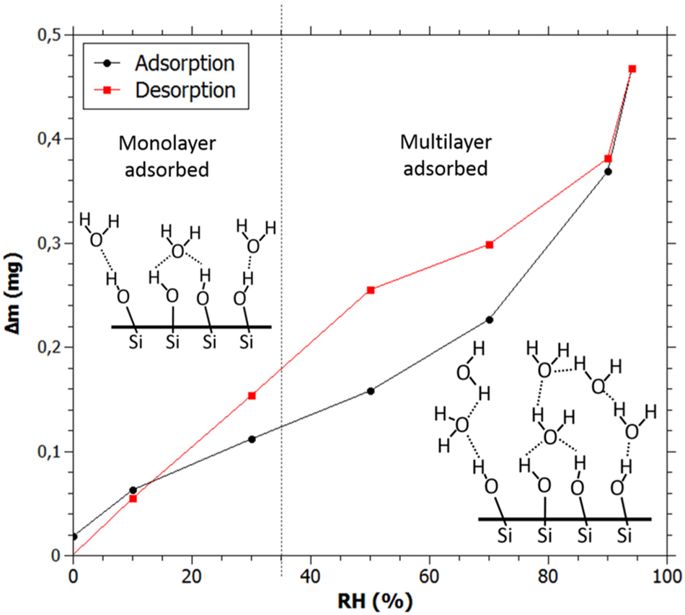npj Materials Degradation ( IF 5.1 ) Pub Date : 2018-06-05 , DOI: 10.1038/s41529-018-0038-1 Loryelle Sessegolo , Aurélie Verney-Carron , Mandana Saheb , Laurent Remusat , Adriana Gonzalez-Cano , Nicolas Nuns , Jean-Didier Mertz , Claudine Loisel , Anne Chabas

|
The understanding of glass alteration is a biogeochemical, industrial, societal (radioactive waste confinement), and cultural heritage issue. Studies have been mainly performed in aqueous conditions. However, glass reactivity under hydraulically unsaturated conditions may be more important than previously recognized. In this context, we evaluate here the role of the alteration layer formed on medieval stained-glass windows on the ongoing alteration in unsaturated conditions. H2O adsorption isotherms were measured to study the relation between the vapor sorption and the relative humidity inside the alteration layer. From it, the average pore radius was calculated, yielding a water vapor diffusion coefficient of 7.8 × 10-7 m² s-1 inside the pore network. Experiments using doped water vapor (D218O) confirm the vapor transport up to the alteration front via fractures and pore network. They also demonstrate that the alteration mainly progresses via an interdiffusion mechanism. The calculated interdiffusion coefficients at 20 °C are 3.6 × 10-20 m2 s-1 at 70% RH and 4.9 × 10-20 m2 s-1 at 90% RH, which is similar to the values measured on model stained-glass samples altered in short durations (1–4 years). Therefore, this study highlights that, given its morphology, the alteration layer is not protective against vapor transport and interdiffusion.
中文翻译:

使用H和O同位素的彩色玻璃窗的长期风化率
对玻璃蚀变的理解涉及生物地球化学,工业,社会(放射性废物限制)和文化遗产问题。研究主要在水性条件下进行。但是,在水力不饱和条件下的玻璃反应性可能比以前认识到的更为重要。在这种情况下,我们在这里评估在不饱和条件下正在进行的改造中,在中世纪彩色玻璃窗上形成的改造层的作用。测量了H 2 O的吸附等温线,以研究气相吸附与蚀变层内部相对湿度之间的关系。从它的平均孔半径计算,产生的水蒸汽扩散系数7.8×10 -7平方米小号-1孔网络内部。使用掺杂水蒸气(D 2 18 O)进行的实验证实了蒸气通过裂缝和孔网传输到蚀变锋面。他们还证明,这种改变主要是通过相互扩散机制进行的。计算得出的在20°C下的互扩散系数在70%RH时为3.6×10 -20 m 2 s -1,在90%RH时为4.9×10 -20 m 2 s -1,与在染色的模型上测得的值相似-玻璃样品在短时间内(1-4年)发生了变化。因此,本研究强调,鉴于其形态,蚀变层不能防止蒸汽传输和相互扩散。



























 京公网安备 11010802027423号
京公网安备 11010802027423号